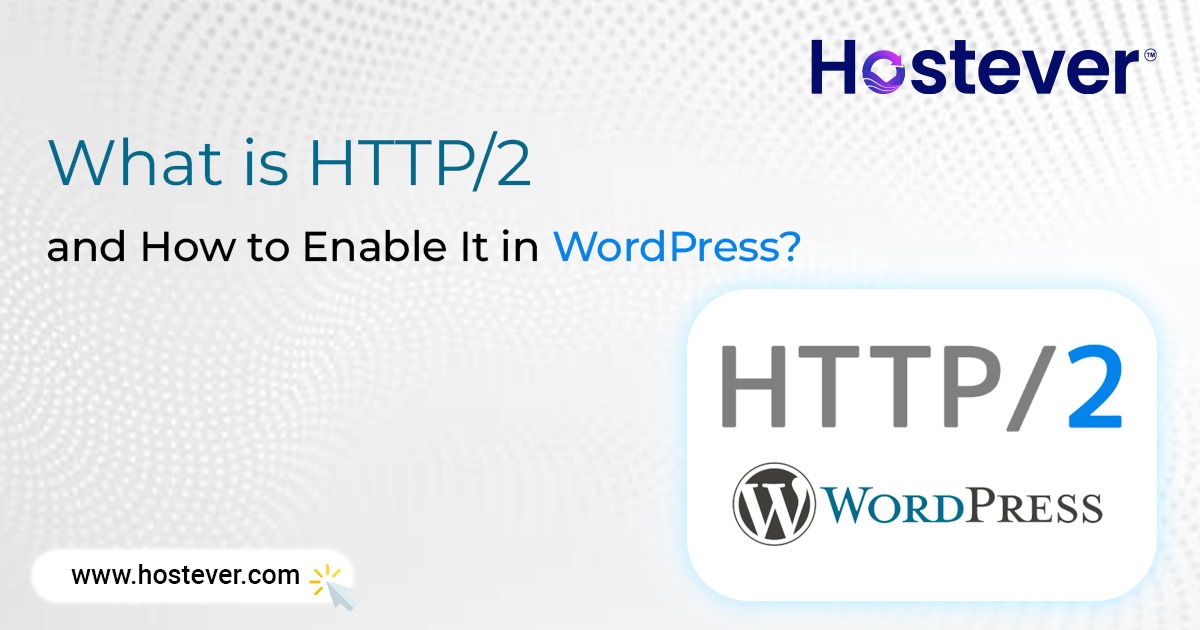
Posted on September 9, 2023 by Mahamodul Hasan Khan
What is HTTP/2 and How to Enable It in WordPress?
In the ever-evolving landscape of the web, the need for faster and more efficient data transfer is paramount. This is where HTTP/2 comes into play. HTTP/2 is a protocol designed to enhance the performance of websites by optimizing the way data is transmitted between a server and a client’s browser. In this article, we’ll delve into the specifics of what HTTP/2 is, its benefits, and how you can enable it in your WordPress website.
Understanding HTTP/2
HTTP/2 is the successor to the widely used HTTP/1.1 protocol. It was developed to address the limitations of the previous version and improve the overall performance of websites. One of the most significant differences between HTTP/2 and its predecessor is how data is transmitted.
Multiplexing: In HTTP/1.1, browsers had to establish multiple connections to a server to fetch different resources, which could lead to inefficient utilization of resources and slower loading times. HTTP/2 introduces multiplexing, which allows multiple requests and responses to be sent and received concurrently over a single connection. This significantly reduces latency and improves page load times.
Header Compression: HTTP/1.1 headers were often verbose, leading to increased overhead in data transfer. HTTP/2 utilizes header compression techniques, reducing the amount of data required to transmit headers. This efficiency contributes to faster load times.
Server Push: HTTP/2 introduces a feature called server push, which allows the server to proactively send resources to the client’s browser before they are explicitly requested. This can further enhance performance by preloading resources the server predicts will be needed.
Prioritization: HTTP/2 allows for the prioritization of resources. This means that more important resources can be sent to the browser first, ensuring that critical content is displayed quickly.
Benefits of HTTP/2
Enabling HTTP/2 in your WordPress website can lead to a range of benefits that directly impact user experience and overall site performance:
- Faster Page Load Times: Multiplexing and header compression significantly reduce the time it takes for your website’s assets to reach the user’s browser.
- Reduced Latency: With multiplexing, the latency associated with establishing multiple connections is greatly diminished, leading to quicker loading times.
- Improved Mobile Experience: HTTP/2’s efficiency is particularly beneficial for mobile users who may have limited bandwidth and less stable connections.
- Enhanced SEO: Page load speed is a crucial factor for search engine rankings. By speeding up your website with HTTP/2, you may see improvements in your SEO efforts.
- Increased Conversion Rates: Faster websites tend to have lower bounce rates and higher conversion rates, as users are more likely to engage with and stay on a site that loads quickly.
Enabling HTTP/2 in WordPress
Enabling HTTP/2 in your WordPress website requires a few steps, but it’s well worth the effort for the performance gains you’ll experience. Here’s how to do it:
Step 1: Verify Server Support
Before enabling HTTP/2, ensure that your web hosting server supports this protocol. Most modern hosting providers offer HTTP/2 support by default, but it’s a good idea to confirm with your hosting company.
Step 2: Install an SSL Certificate
HTTP/2 requires that your website be served over HTTPS. To enable HTTPS, you need an SSL (Secure Sockets Layer) certificate. Many hosting providers offer free SSL certificates through services like Let’s Encrypt.
Step 3: Update WordPress
Keep your WordPress installation up to date. While HTTP/2 compatibility is not directly tied to your WordPress version, maintaining the latest version ensures that your website is optimized for performance and security.
Step 4: Check Browser Compatibility
Most modern browsers are compatible with HTTP/2. However, it’s a good practice to check if the majority of your audience uses browsers that support HTTP/2. This will ensure that your users can fully benefit from the performance improvements.
Step 5: Test and Monitor
After enabling HTTP/2, thoroughly test your website to ensure that all elements load correctly and that there are no unexpected issues. Regularly monitor your site’s performance to gauge the improvements in page load times.
In Conclusion
HTTP/2 is a game-changer in web performance, offering faster load times, reduced latency, and an overall improved user experience. By enabling HTTP/2 in your WordPress website, you’re taking a significant step toward providing a more efficient and responsive online platform for your visitors.
Remember that while the steps to enable HTTP/2 might involve technical considerations, the benefits are well worth the effort. A faster website not only pleases your visitors but can also positively impact your site’s search engine rankings and ultimately lead to better conversion rates. So, go ahead and embrace the power of HTTP/2 to elevate your WordPress site to new levels of speed and performance.